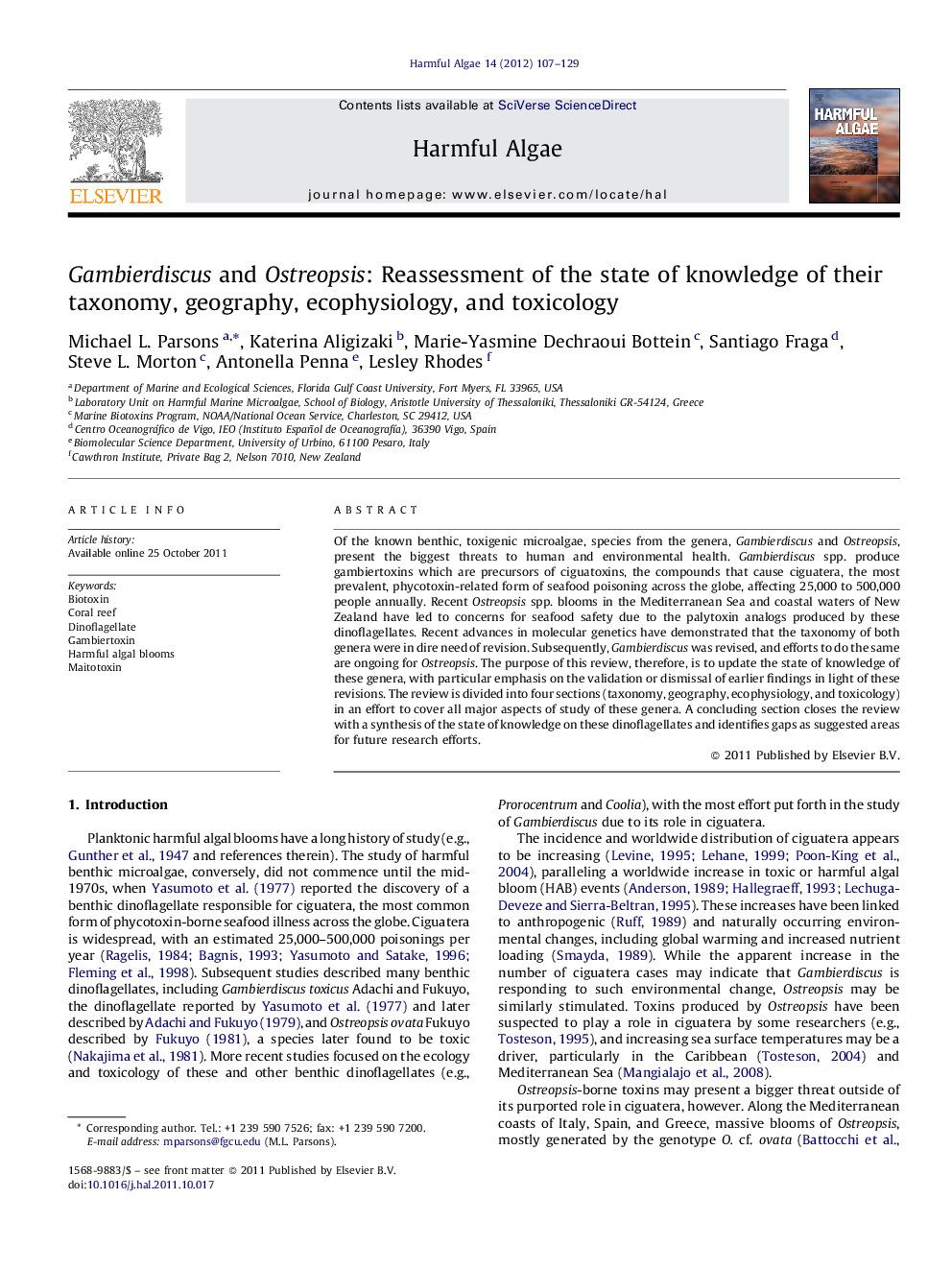| Article ID | Journal | Published Year | Pages | File Type |
|---|---|---|---|---|
| 4545634 | Harmful Algae | 2012 | 23 Pages |
Of the known benthic, toxigenic microalgae, species from the genera, Gambierdiscus and Ostreopsis, present the biggest threats to human and environmental health. Gambierdiscus spp. produce gambiertoxins which are precursors of ciguatoxins, the compounds that cause ciguatera, the most prevalent, phycotoxin-related form of seafood poisoning across the globe, affecting 25,000 to 500,000 people annually. Recent Ostreopsis spp. blooms in the Mediterranean Sea and coastal waters of New Zealand have led to concerns for seafood safety due to the palytoxin analogs produced by these dinoflagellates. Recent advances in molecular genetics have demonstrated that the taxonomy of both genera were in dire need of revision. Subsequently, Gambierdiscus was revised, and efforts to do the same are ongoing for Ostreopsis. The purpose of this review, therefore, is to update the state of knowledge of these genera, with particular emphasis on the validation or dismissal of earlier findings in light of these revisions. The review is divided into four sections (taxonomy, geography, ecophysiology, and toxicology) in an effort to cover all major aspects of study of these genera. A concluding section closes the review with a synthesis of the state of knowledge on these dinoflagellates and identifies gaps as suggested areas for future research efforts.
► Gambierdiscus and Ostreopsis are toxigenic, benthic dinoflagellates. ► They represent a growing human health risk exacerbated by climate change. ► Taxonomic ambiguities have led lead to ongoing revision of both genera. ► This is a review to determine which past studies are still valid. ► Future research foci are recommended.
